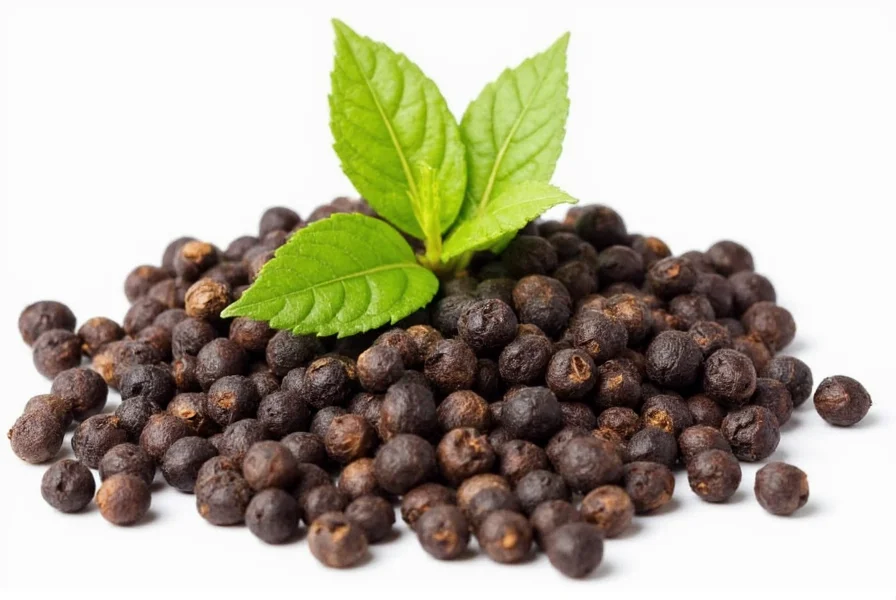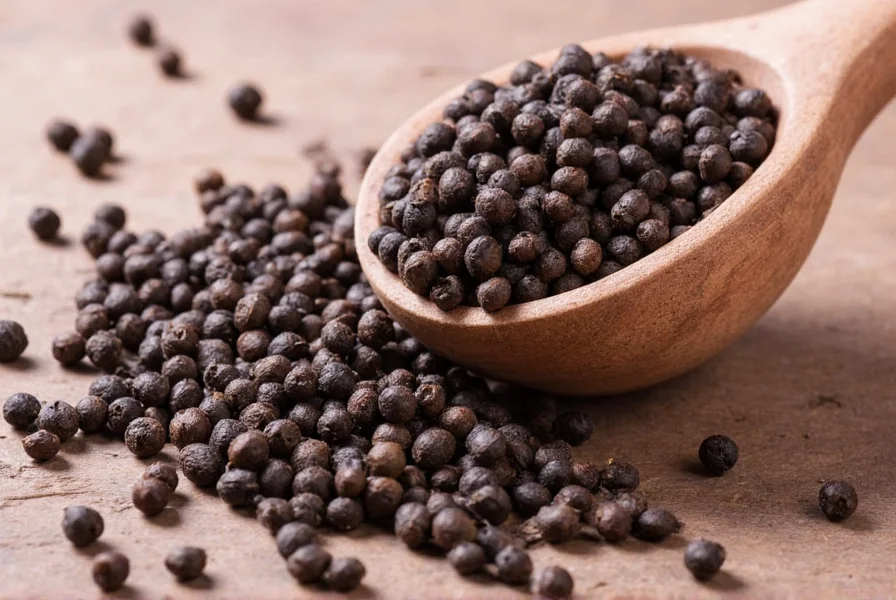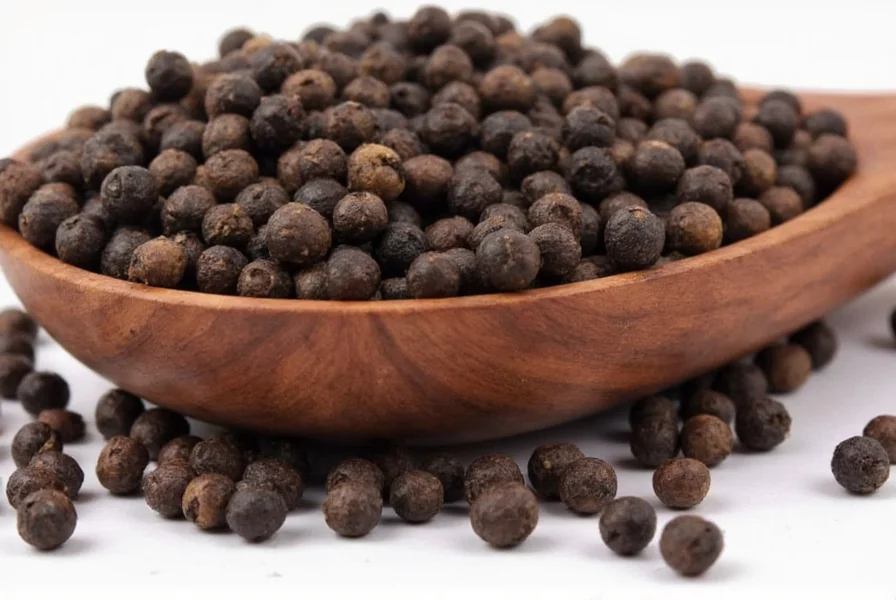For centuries, black pepper has earned the title "king of spices" for good reason. This versatile seasoning originates from the Malabar Coast of India and has been prized since ancient times for both culinary and medicinal purposes. The active compound responsible for black pepper's signature heat is piperine, which gives it that characteristic bite without the intense burn of chili peppers.
Origins and Historical Significance
Native to South India's tropical forests, black pepper cultivation dates back over 4,000 years. Ancient Romans valued it so highly that it was often used as currency—hence the term "peppercorn rent." During the Middle Ages, pepper was so valuable that merchants would literally weigh it against gold. The spice trade routes established to bring black pepper to Europe shaped global commerce and exploration for centuries.
How Black Pepper Is Processed
The production process determines black pepper's distinctive characteristics. Here's how what is black pepper made from transforms into the spice we know:
| Stage | Process | Result |
|---|---|---|
| Harvesting | Unripe green drupes picked | Small green berries |
| Processing | Boiled briefly in hot water | Triggers enzymatic fermentation |
| Drying | Sun-dried for 1-2 weeks | Outer layer turns black, shrivels |
| Final Product | Whole peppercorns or ground | Distinctive pungent flavor profile |
This specific processing method differentiates black pepper from other varieties. White pepper, for instance, comes from the same plant but uses ripe red berries with the outer layer removed. Green pepper consists of unripe berries preserved through freeze-drying or brining, while red pepper uses fully ripe berries.

Nutritional Profile and Health Benefits
While primarily used as a seasoning, black pepper offers several potential health benefits. A single teaspoon (2.3g) contains:
- 5 calories
- 0.1g protein
- 1g carbohydrate
- 0.6g fiber
- Significant manganese (18% of daily value)
- Moderate iron and potassium
The compound piperine, which gives black pepper its heat, has been studied for potential health effects. Research suggests piperine may enhance nutrient absorption—particularly curcumin from turmeric—by up to 2,000%. Some studies indicate black pepper might support digestion by stimulating digestive enzymes and potentially offer antioxidant properties.
Culinary Applications and Flavor Pairing
Understanding what is black pepper's flavor profile helps maximize its culinary potential. Black pepper delivers a complex taste experience:
- Initial floral, almost citrusy notes
- Middle notes of wood and spice
- Finishing heat that builds gradually
Chefs prefer freshly ground black pepper over pre-ground versions because the volatile oils responsible for its aroma dissipate quickly. The difference between freshly ground and pre-ground black pepper is substantial in terms of flavor intensity and complexity. For optimal flavor, add black pepper toward the end of cooking, as prolonged heat can diminish its aromatic compounds.
Selecting and Storing Black Pepper
When exploring where does black pepper come from commercially, you'll encounter various grades. Higher quality peppercorns are typically larger, darker, and more uniform. Look for whole peppercorns rather than pre-ground powder for maximum freshness.
Proper storage maintains black pepper's potency. Keep whole peppercorns in an airtight container away from light and moisture. Stored correctly, they'll retain their flavor for 2-3 years. Ground pepper loses potency much faster—within 4-6 months. For the best culinary experience, invest in a quality pepper mill and grind peppercorns just before use.

Black Pepper in Global Cuisines
Different cultures utilize black pepper in distinctive ways. In French cuisine, it's a key component of steak au poivre. Indian cooking features black pepper prominently in garam masala and many regional dishes. Scandinavian cuisines use it generously in gravlax and other cured fish preparations. Understanding how is black pepper processed helps explain why certain varieties work better in specific culinary applications.
While black pepper remains the most popular variety globally, regional preferences exist. Southeast Asian cuisines often favor white pepper for its cleaner heat in light-colored dishes, while Tellicherry peppercorns from India are prized by chefs worldwide for their complex flavor profile and larger size.
Frequently Asked Questions
What is black pepper made from?
Black pepper comes from the unripe green drupes (berries) of the Piper nigrum vine. These are briefly cooked in hot water and then sun-dried, causing the outer layer to turn black while preserving the inner seed. This specific processing method creates black pepper's distinctive flavor and appearance.
How does black pepper differ from white pepper?
Black pepper is made from unripe green peppercorns that are cooked and dried with their outer layer intact, giving them a complex, pungent flavor. White pepper comes from fully ripe peppercorns with the outer layer removed, resulting in a cleaner, more direct heat with less complexity. White pepper is often used in light-colored dishes where black specks would be undesirable.
What are the health benefits of black pepper?
Black pepper contains piperine, which may enhance nutrient absorption (particularly curcumin from turmeric) by up to 2,000%. It also provides manganese, iron, and potassium. Some research suggests potential digestive benefits as it may stimulate digestive enzymes, and it contains antioxidants. However, most health benefits are observed with concentrated piperine extracts rather than typical culinary amounts.
Why is freshly ground black pepper better than pre-ground?
Freshly ground black pepper retains volatile aromatic compounds that dissipate quickly after grinding. These compounds provide the complex flavor profile—initial floral notes, middle wood tones, and building heat. Pre-ground pepper loses these volatile oils during processing and storage, resulting in a one-dimensional heat without the nuanced flavor of freshly ground pepper.
How should I store black pepper to maintain freshness?
Store whole peppercorns in an airtight container away from light, heat, and moisture. Properly stored, they'll retain flavor for 2-3 years. Ground pepper loses potency much faster—within 4-6 months. For best results, purchase whole peppercorns and grind them just before use with a quality pepper mill. Avoid storing near the stove or in clear containers exposed to light.











 浙公网安备
33010002000092号
浙公网安备
33010002000092号 浙B2-20120091-4
浙B2-20120091-4